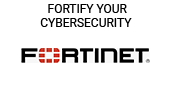CNME Editor Mark Forker sat down with Venket Naga, CEO of Serenity, to find out how they are turning blockchain technology into revenue-generating use cases through its biometric blockchain card sAxess, and how fractional ownership is both democratising the real estate sector – and giving users the autonomy and control over their own investment strategies.

Technology has fundamentally reshaped the way we live, work and play.
It is fair to say that for all the benefits technology has undoubtedly provided us as a society, there have been many trade-offs.
One of the biggest has been privacy.
Serenity is a UAE-based blockchain technology company that specialises in securing digital finance solutions.
However, as their CEO Venket Naga was keen to stress, the company’s mission statement is focused on reclaiming our privacy, which in one way or another was lost during our transition towards Industry 4.0.
Venket is the dynamic force driving the rapid growth of Serenity across the UAE, and prior to joining the blockchain player, he was the Chief Operating Officer at CommIT, where he played a key role in diversifying their business, whilst at Karma International he helped them become one of the largest IT hardware distributors in Europe achieving annual revenues of $2bn.
Now he is immersed in the world of Web3, and wants to first enable users to reclaim their privacy.
“As technology increasingly played a bigger role in our day-to-day lives, a number of large technology companies really started to take over the tech world, but as a direct result of that, the concept of data privacy started to become somewhat of a myth. Our data has been harvested, and we know it has been abused by many entities, and as a result, there is inevitably a huge distrust between consumers and big tech. I come from a traditional Web2 world, and I’ve worked in the tech sector for the best part of 24 years. However, what we saw was that the global tech community and users across the board deserve a sense of privacy and security, but they are being denied a fundamental human right, which is to have autonomy over their own data, and for that to be private and secure. We understood the immense potential of what blockchain technology can offer in terms of various features of privacy, security, transparency, immutability,” said Naga.
Naga stressed the need for education when it comes to the benefits that blockchain technology can provide, especially in a climate where users are hyperaware and reluctant to give companies their data in case it is misused.
But he conceded that a combination of education and building trust is key to accelerate the adoption of blockchain.
“When people think of blockchain, some think about it from a decentralised storage perspective, but there are so many other aspects to the technology. When people hear the names of hyper-scalers like Amazon and Google, they assume their data is safe and secure, but we know that’s not always the case. There are high-profile hacks and breaches on a daily basis. However, we are acutely aware of the fact that it’s a big decision for them to change their data storage provider, and select Serenity, because it’s on the blockchain. If they want to adopt the technology, then they have to understand the concept of blockchain. There has to be an education process. We are trying to do this, and we are being proactive in our efforts by establishing our own academy that is designed to educate everyone on blockchain, and we want to create awareness,” said Naga.
When it comes to accelerating the adoption of disruptive technologies, the one universal element that always helps is developing use-cases.
In March 2025, Serenity launched the world’s first biometric secured blockchain card, which Naga believes will really accelerate the adoption and awareness of blockchain technology across the UAE.
“We launched sAxess, the world’s first biometric secured blockchain card at the beginning of the year, and the response to the card has been fantastic. Again, the key component in this is what we have already talked about, and that is trust. Our sAxess card is a by-product of our collaboration with French technology company IDEMIA. If you go to any airport globally that has biometrics, then in almost all cases it will be powered by IDEMIA technology. IDEMIA is a global leader when it comes to biometric technology and has also issued billions of payment cards, so again, having that partnership with such a leader in the biometric space gives us huge credibility. IDEMIA has sold billions of cards, and has never been hacked, and that gives users the trust they want when using our new blockchain card,” said Naga.
Naga explained what ultimately differentiates sAxess from other players in the market, again highlighting the biometric component.
“There are a lot of dimensions that make sAxess standout in the marketplace, but one of the first dimensions that I’d like to focus on is the fact that it is a biometric hardware wallet. There are a lot of on chain wallets like TrustWallet and the MetaMask Wallet on the marketplace, but a hardware wallet is much, much more secure. It is a lot less prone to hacks and breaches, but what I would confidently say is that we are the only hardware wallet provider where the external access to the wallet can only happen through biometrics. That’s a big differentiator for us when compared to other hardware wallet providers,” said Naga.
Naga revealed that Serenity has plans to expand its sAxess card to the enterprise space.
“We do plan to sell sAxess to large enterprises who have their existing systems like datacentres using traditional usernames and passwords to gain access. It is an archaic and outdated method. We aim to sell sAxess to enterprise players in a B2B scenario, where the existing login credentials of their clients and employees will be replaced by our biometrics card. They just need to go and tap their card, validate their biometrics and gain entry into the existing system. There is a huge demand for this across the enterprise space as they are trying to get away from login and passwords, and we know that the biggest vulnerability within large, medium or small enterprises is the human factor,” said Naga.
Tokenisation is a term that more and more people across the UAE are talking about.
In 2024, the landmark decision by the Dubai Land Department to allow tokenised property transactions really aroused interest.
Serenity recently announced a huge partnership with MTA Real Estate, which will see them launch a blockchain-powered real estate investment portal.
“I think a good place to start when broaching this topic is to explain the concept of real-word assets (RWA) because a lot of people are talking about real-world assets. Essentially, RWA tokenisation is the tokenisation of traditional financial assets. You have a big variety of asset classes on traditional financial assets, but it’s the tokenisation of the traditional assets on blockchain that is allowing for fractional ownership. The fundamental component of RWA is all stemming from the concept of fractional ownership, which you could never do with a traditional asset, and that is what is so transformative about the tokenisation movement through the new concept of fractional ownership,” said Naga.
Naga pointed out that the concept of fractional ownership completely democratises real estate investment.
“Look, let’s be frank, traditionally to become an investor in the real estate game then you needed to have accumulated a lot of wealth to be considered a player, and it was closed off for the majority of people. Fractional ownership now opens up the game to everyone. For example, say there is a real estate developer in Dubai working on a real estate development that is worth $100m. As an individual, can I go and buy a piece of that $100m real estate? Absolutely not. It is not going to be possible in a normal scenario, but if the real estate developer decides he is going to tokenise his asset, then by buying these tokens you can gain fractional ownership of the building. It is completely revolutionary in the real estate marketplace,” said Naga.
Naga also highlighted how fractional ownership gave people control over their investments.
“Again, traditionally, when it came to making investments, typically you’d give your capital to a multinational investment company like BlackRock, and they would decide how they make your money grow, but you had no control or autonomy over that investment. A fractional ownership model enables people to have access to real-world assets that in the traditional world were previously unattainable. It’s changing the game totally, and disruption is a good thing,” said Naga.
Naga concluded a brilliant interview by claiming that the UAE is miles ahead of the United States when it comes to the tokenisation of real-world assets and the whole concept of fractional ownership when it comes to the regulation of the industry.
“In the US, they have still not digitised the title deeds, so what they technically do is put the shares of the real estate company back into the organisation. They only tokenise the shares of the company, and not the asset itself. So that’s the prevailing method in the US, where you don’t directly tokenise the title deed of the property. Instead, they tokenise only the shares of the company, which holds the real estate. This is where we believe that the UAE is taking the lead on a global scale, and we are so excited about the opportunities emerging in this space,” said Naga.





